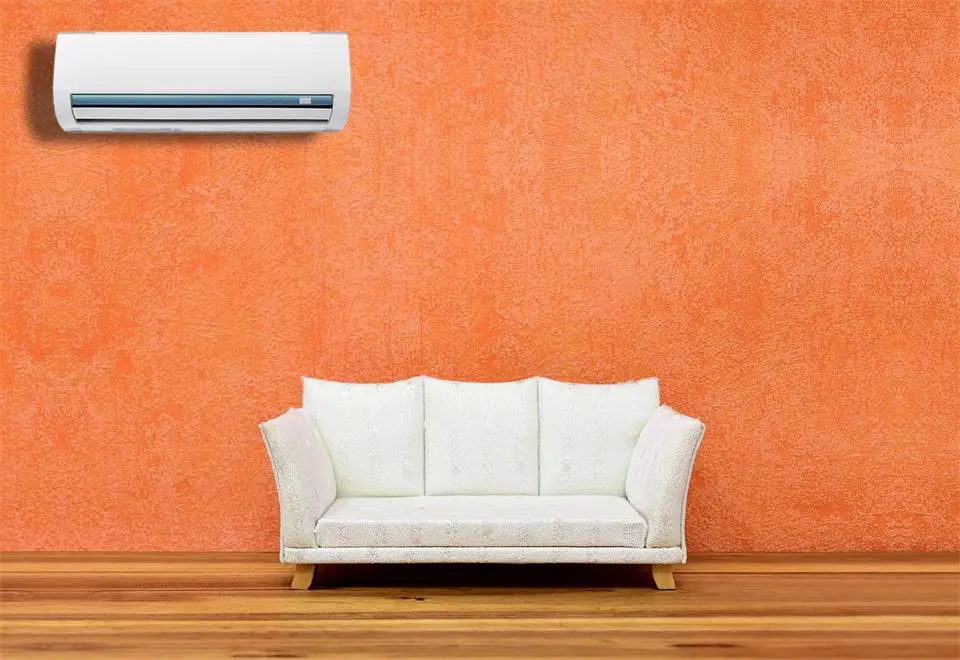Home Improvement
Furniture Shopping Tips: How to Select Quality Pieces That Last

When it comes to shopping for furniture, everyone can use some valuable tips. Whether you’re exploring local furniture stores, planning to buy furniture online, or hunting for the perfect dining table, this guide will equip you with the knowledge you need. In a world with many furniture stores and options, making informed choices is critical to finding quality furniture that transforms your space.
Understanding your needs
Before you embark on your furniture shopping journey, take a moment to understand your needs. Are you furnishing a cozy family room, buying used furniture, upgrading your elegant dining room, or searching for sleek and clever storage solutions? Knowing your specific requirements will keep you focused and prevent impulsive purchases.
Exploring different types of furniture
Furniture comes in various forms, from side tables and classic dining tables and chairs to modern storage space solutions like dressers and desks. To maximize your space, explore different types of furniture from reputable brands like Ferm Living Furniture and consider how each piece contributes to your interior design.
Quality furniture over price
One of the most critical furniture shopping tips is prioritizing quality over price when buying furniture anywhere. While chasing lower prices is tempting, investing in well-made furniture is a better deal. Quality pieces are built to last and often come with comprehensive warranties, providing long-term satisfaction and peace of mind.
Online retailer vs. traditional retail store
The choice of where to shop is a significant decision. Traditional brick-and-mortar furniture stores offer a tactile shopping experience, allowing you to see, touch, and test the furniture. In contrast, modern shopping online provides convenience and access to an extensive selection, enabling you to compare prices and styles from the comfort of your home.
Budgeting wisely
Establishing a budget is a fundamental step in your furniture shopping journey. Determine a clear budget range per furniture store you visit and stick to it. This disciplined approach to select furniture will help you make informed decisions when buying furniture and find pieces that offer the best value for your hard-earned money.
Consider your space
To ensure your new furniture fits seamlessly into your space, take precise measurements of your room’s dimensions and layout. This ensures you select appropriately sized pieces that offer functionality without overwhelming the room.
Style and aesthetics
Your furniture should align with your style and complement your home’s aesthetics and furnishings. Consider color, design, and fabrics to create a cohesive, visually appealing look reflecting your unique taste.
Materials and construction
The materials and construction of furniture are critical factors in determining its durability. Look for pieces made from solid wood, sturdy metals, or other high-quality materials. Pay close attention to construction details, such as joints and finishes, to ensure your furniture stands the test of time.
Test before buying furniture
Comfort should be a top priority when selecting furniture, especially chairs and sofas. Before purchasing, test the comfort level by sitting or lying on them whenever possible. Ensure that they meet your standards for relaxation and ergonomic support.
Return policies and warranties
Regardless of where you decide to shop, always inquire about the store or online retailer’s return policies and warranties. Understanding your return shipping options in case of any issues or defects is crucial for a hassle-free shopping experience.
Finding discounts and deals
Who doesn’t love a good deal? Compare costs across different stores and retailer websites to secure the best prices. Additionally, watch for seasonal store discounts and special store promotions that can help you snag your desired accessories and pieces at a lower price.
Parting words
Furniture shopping is an exciting endeavor that allows you to shape your living space according to your vision. By following these furniture shopping tips, you’ll be well-equipped to make informed decisions and pick furniture that aligns with your budget, style, and practical needs. Remember, your home reflects your personality, so take your time, savor the process, and invest in pieces that blend comfort and style for years.
Home Improvement
10 Easy Air Conditioning Maintenance Tips for Every Homeowner


Air conditioners are quite necessary to keep our homes cool during the summer, but they need regular maintenance for them to continue functioning effectively.
Proper maintenance will help you not only to achieve a home comfort inside but also an extended lifespan for the unit and decrease in energy consumption.
If you’re facing frequent issues and think it might be time for a new unit, consider consulting an AC replacement company to explore your options.
Read our well-curated 10 pragmatic tips to guide you in effectively caring for your air conditioning system.
1. Routine Air Filter Changes for Optimal Performance


A very easy and important maintenance activity with your AC is replacing the air filter. When your filter becomes soiled and clogged, it’ll result in bad airflow and causes your system to work much harder and less efficiently than it needs to be. It also may affect the quality of air inside and causes allergies and respiratory problems.
Action Step: Check the air filter monthly, especially during high-season use periods. You should replace most air filters every 1-3 months. Replace it more often in these conditions of high usage if you have pets or a lot of dust floating around.
2. Inspect Your Thermostat for Proper Functioning
Your thermostat is part of the cooling appliance that has the significant responsibility to decide how you want your indoor temperature to be. If it cannot do so effectively, then your AC system will not work efficiently at all.
Action Step: Your thermostat should be set to the temperature and cooling mode correctly. For maximum energy saving, you might want to get a programmable thermostat: you can adjust the temperature to suit schedules to keep your home cool while saving on energy by not using as much when you are away.
3. Maintain Efficiency by Cleaning the Condenser Coils
Condenser coils are usually found in the outdoor unit. They cool the air in your home. They naturally collect dirt, dust, and debris over time that blocks the flow of cooling, causing your AC unit to work that much harder and ultimately overheat.
Action Step: Switch power off at the AC unit and spray coils gently with a garden hose. Avoid using a lot of pressure, since that will break the delicate fins, and for tough dirt stains, coil cleaner can be purchased usually at most hardware stores. Regular cleaning of the coils will make your unit work better.
4. Regularly Examine the Condensate Drain
The condensate drain also allows the moisture taken out of the air to drain outside your house. If it gets blocked, then it causes water damage; in addition, there would be high humidity levels inside your house.
Action Step: Check the condensate drain periodically for blockage or buildup inside it. If the drain is clogged, you can make it free using a wet/dry vacuum or pipe cleaner. Prevent the growth of algae and molds inside the drain line by just putting some drops of bleach there.
5. Maintain evaporator coils with routine cleaning
Inside this indoor unit is the evaporator coil, which takes heat from your home’s air. Dirty coils degrade performance and can even freeze the system up.
Action Step: Access the Evaporator Coils You may need to take up some of the indoor unit’s panels for access to the evaporator coils. Wipe off with a soft brush any dust or dirt that has gathered on them. Alternatively, use a no-rinse coil cleaner spray, if you want to clean it more thoroughly. Check and clean these coils at least once per year.
6. Ensure Ductwork is Leak-Free and Sealed
Leaky ducts significantly impact your AC system’s efficiency since the cool air escapes before it reaches its desired room. This wastes energy in addition to running the system harder to achieve and maintain the desired temperature.
Action Step: Check your ductwork for openings, seams, or partially or completely separated joints. Seal the openings, seams, and joints with mastic sealant. You can also use metal-backed tape, but avoid not duct tape. If you do not know the condition of your ductwork, have a professional assess it.
7. Keep Debris Away from the Outdoor Unit
An outdoor condenser unit will need adequate airflow for its successful operation. Sticking leaves, grass, or twigs can restrict airflow. They can adversely affect your system’s performance.
Action Step: Maintain at least 2-3 feet of clearance around the outdoor unit, free from debris. Some foliage or shrubs will need to be trimmed back, or if you experience leaves or other debris, clean these out on a regular basis. Also, ensure the unit is level on its base. If it is not level, it may cause problems with operations.
8. Check for Adequate Refrigerant Levels
The refrigerant inside your ac unit absorbs and releases heat. Therefore, it will play a big role in how effective it is in cooling your home. Thereby, the refrigerant levels inside your ac system may determine its efficiency or failure if low.
Action Step: If your AC system is not cooling right, that’s pretty much a good telltale sign that you have low refrigerant or a leak. Both of these are professional jobs that involve diagnosis and repair. Never mess around with refrigerants on your own-they’re hazardous to your health.
9. Plan Annual Maintenance with a Professional Expert
Most of the maintenance work may be done by an individual, but it’s quite recommended that you have your professional HVAC technician visit your system at least once every year to check several things that would not easily pop into the average homeowner’s mind.
Action Step: The pre-season inspection should be scheduled in spring before the cooling season starts. A technician will check and inspect your refrigerant levels, work on all electrical components, clean the coils, and check to ensure that your system is good and working well.
10. Stay Alert to Fluctuations in Energy Bills
An increase in your energy bill without any corresponding increase in your usage could very well be caused by an inefficient working of your AC system. This may result from a faulty component, dirty filter, or refrigerant leak, among others.
Action Step: Monitor your monthly energy bills. Whenever there is an unusual increase in your monthly energy bills, you should inspect your AC system yourself and check everything is fine or not. If you find nothing wrong, you should consider hiring a professional to inspect it properly.
Bonus Tip: Use Ceiling Fans Alongside Your AC for Efficiency
You could use ceiling fans with your AC system to circulate cool air in a more balanced fashion to every area in the house. That way, you might be able to raise the thermostat by another two or three degrees without seeming to lose much comfort, improve efficiency on the AC a little bit and save money on electricity.
Action Step: Flip on ceiling fans in rooms being occupied to help cool. Never forget to shut them off when leaving the room. It is these people, not the space which is being cooled.
Conclusion
Proper maintenance of your air conditioner can help ensure that you always have a cosy indoor climate and avoid expensive breakdowns or even having to replace the whole unit.
If you follow these 10 essential maintenance tips, your AC unit will perform with efficiency, save you energy dollars, and prolong its life.
The average person desires a sense of comfort, and one way to attain this comfort is by maintaining their AC unit.
Regular attention to your AC unit will improve its performance and give you peace of mind during sweltering months. Stay cool and comfortable by making AC maintenance a priority in your home!
Home Improvement
Finding the Right Paver Patio Contractor: What You Need to Know


Why Hire a Paver Patio Contractor?
When it comes to installing a paver patio, hiring a skilled contractor can make all the difference. A paver patio contractor specializes in designing and constructing patios using paver stones, ensuring that the final result is both visually appealing and durable.
In this article, we’ll explore the benefits of working with a professional contractor, what to look for when hiring one, and how to ensure a successful patio installation.
Benefits of Hiring a Professional Paver Patio Contractor
Choosing to work with a professional paver patio contractor offers several advantages:
Expertise and Experience
Professional contractors bring years of experience and expertise to your project. They understand the nuances of paver installation, from site preparation to layout design, ensuring that your patio is built to last.
Access to Quality Materials
Contractors have access to high-quality paver materials and can recommend the best options for your specific needs. They often work with trusted suppliers to ensure that the materials used are durable and aesthetically pleasing.
Efficient Installation
With a professional contractor, the installation process is streamlined and efficient. They have the tools and skills required to complete the project quickly while maintaining high standards of workmanship.
Design Expertise
Contractors can provide valuable design advice and help you choose the right paver patterns, colors, and layouts. Their expertise ensures that your patio complements your home and landscape while meeting your functional requirements.
How to Choose the Right Paver Patio Contractor
Selecting the right contractor is crucial for a successful patio project. Here are some tips to help you find a reliable and skilled paver patio contractor:
Check Qualifications and Experience
Ensure that the contractor has the necessary qualifications and experience in paver patio installation. Look for a contractor with a proven track record of successful projects and positive client feedback.
Review Their Portfolio
Examine the contractor’s portfolio to see examples of their previous work. This will give you an idea of their style, quality, and ability to handle projects similar to yours.
Read Customer Reviews
Customer reviews and testimonials provide insights into the contractor’s reliability and workmanship. Look for reviews on independent platforms and ask for references from past clients.
Verify Licensing and Insurance
Make sure the contractor is properly licensed and insured. This protects you from potential liabilities and ensures that the contractor meets industry standards.
Obtain Detailed Estimates
Request detailed written estimates from multiple contractors. Compare the costs, materials, and scope of work to ensure that you are getting a fair price and understanding what is included in the project.
The Paver Patio Installation Process
Understanding the typical steps involved in paver patio installation can help you prepare for the project:
Initial Consultation
The process begins with an initial consultation where the contractor discusses your vision, requirements, and budget. They will assess the site and provide recommendations based on your preferences.
Design and Planning
Next, the contractor will create a detailed design plan, including paver patterns, colors, and layout. They will present this plan to you for approval before proceeding with the installation.
Site Preparation
The contractor will prepare the site by clearing the area, excavating, and ensuring proper drainage. A well-prepared site is essential for a stable and long-lasting patio.
Base Installation
A solid base is crucial for the durability of the paver patio. The contractor will install a gravel or sand base and ensure it is compacted properly before laying the pavers.
Paver Installation
The pavers are then installed according to the design plan. The contractor will arrange the pavers, ensuring proper alignment and spacing, and then secure them in place.
Finishing Touches
After the pavers are installed, the contractor will add finishing touches such as joint sand and sealing. They will clean the area and make any necessary adjustments to ensure a high-quality finish.
Common Issues and How to Address Them
While paver patios are generally durable, some issues may arise. Here’s how to address common problems:
Settling or Shifting
If pavers settle or shift over time, it may be due to inadequate base preparation. Ensure proper installation and address any settling issues promptly to maintain a level surface.
Weed Growth
Weeds can grow between pavers if the joint sand is not properly maintained. Regularly sweep the patio and use weed control measures to prevent growth.
Stains and Discoloration
Stains or discoloration can occur due to spills or environmental factors. Clean the patio regularly and use appropriate sealers to protect the pavers and maintain their appearance.
Conclusion
Hiring the right paver patio contractor is essential for a successful patio project. By carefully selecting a skilled professional, you ensure that your patio is designed and installed to meet your expectations and enhance your outdoor space.
With the right contractor, you can enjoy a beautiful, durable paver patio that adds value and charm to your home.
Home Improvement
The Ultimate Guide to Furnace Maintenance


A well-maintained furnace is essential for ensuring your home stays warm and comfortable throughout the colder months. Regular furnace maintenance not only extends the life of your heating system but also ensures it operates efficiently, saving you money on energy bills and reducing the risk of breakdowns.
In this guide, we’ll cover everything you need to know about furnace maintenance, from routine tasks you can do yourself to the importance of professional inspections.
Why Furnace Maintenance Matters
Furnace maintenance is critical for several reasons:
Improved Efficiency
A clean and well-tuned furnace operates more efficiently, using less energy to heat your home. This not only lowers your utility bills but also reduces your carbon footprint.
Enhanced Safety
Furnaces that are not properly maintained can pose safety risks, such as carbon monoxide leaks or even fires. Regular inspections can identify and address potential hazards before they become serious problems.
Extended Lifespan
Like any mechanical system, a furnace that receives regular care will last longer. Routine maintenance helps prevent excessive wear and tear, reducing the likelihood of premature breakdowns and the need for costly replacements.
Reliable Performance
Regular maintenance ensures your furnace is ready to perform when you need it most, minimizing the risk of unexpected failures during the coldest months of the year.
DIY Furnace Maintenance Tasks
While some furnace maintenance tasks should be left to professionals, there are several routine tasks that homeowners can do to keep their systems in good shape:
Replace the Air Filter
One of the most important maintenance tasks is regularly replacing the air filter. A dirty filter restricts airflow, forcing your furnace to work harder and reducing efficiency. Aim to replace the filter every 1-3 months, depending on usage and the type of filter.
Check the Thermostat
Ensure your thermostat is functioning correctly by testing it before the heating season begins. If you have an older thermostat, consider upgrading to a programmable or smart thermostat to improve energy efficiency.
Inspect the Vents
Walk through your home and check that all vents and registers are open and unobstructed. Blocked vents can cause uneven heating and put extra strain on your furnace.
Clean Around the Furnace
Keep the area around your furnace clear of dust, debris, and flammable materials. A clean environment reduces the risk of fire and ensures proper airflow to the system.
Check the Flame
If you have a gas furnace, check the pilot light or burner flame. The flame should be a steady blue color. A yellow or flickering flame could indicate a problem with the burner or a carbon monoxide issue, which requires immediate professional attention.
The Importance of Professional Furnace Maintenance
While DIY tasks are important, scheduling professional furnace maintenance at least once a year is crucial for keeping your system in top condition. Here’s what to expect during a professional furnace tune-up:
Comprehensive Inspection
A professional technician will perform a thorough inspection of your furnace, checking for signs of wear, corrosion, and potential issues with components such as the heat exchanger, blower motor, and electrical connections.
System Cleaning
The technician will clean various parts of the furnace, including the burners, blower, and heat exchanger, to ensure optimal performance and efficiency.
Lubrication
Moving parts, such as the blower motor, may require lubrication to reduce friction and prevent wear. This helps your furnace run smoothly and quietly.
Safety Checks
Safety is a top priority during a professional tune-up. The technician will check for gas leaks, carbon monoxide emissions, and ensure the proper operation of safety controls.
Performance Testing
After completing the inspection and cleaning, the technician will test the furnace’s performance to ensure it is heating your home effectively and efficiently. This includes checking the system’s airflow, thermostat calibration, and overall operation.
When to Schedule Furnace Maintenance
The best time to schedule furnace maintenance is in the fall, before the heating season begins. This ensures your furnace is in peak condition when you need it most. However, if you haven’t had your furnace serviced in over a year, it’s never too late to schedule a tune-up.
Additionally, if you notice any of the following signs, you should contact a professional for maintenance or repairs immediately:
- Unusual noises such as banging, rattling, or squealing.
- Inconsistent heating or cold spots in your home.
- An unexplained increase in your energy bills.
- A yellow or flickering pilot light or burner flame.
- Frequent cycling on and off of the furnace.
The Cost-Benefit of Regular Furnace Maintenance
Some homeowners may be tempted to skip annual maintenance to save money, but this can be a costly mistake in the long run. Here’s why regular furnace maintenance is a smart financial investment:
Lower Energy Bills
As mentioned earlier, a well-maintained furnace operates more efficiently, which translates to lower energy consumption and reduced utility bills.
Avoid Costly Repairs
Routine maintenance helps catch small issues before they become major problems, reducing the likelihood of expensive emergency repairs.
Extend Furnace Lifespan
By preventing excessive wear and tear, regular maintenance can add years to the life of your furnace, delaying the need for a costly replacement.
Maintain Manufacturer’s Warranty
Many furnace manufacturers require proof of annual maintenance to keep the warranty valid. Skipping maintenance could void your warranty, leaving you responsible for the full cost of any repairs or replacements.
Conclusion
Furnace maintenance is an essential part of homeownership that can’t be overlooked. By performing regular DIY tasks and scheduling professional tune-ups, you can ensure your furnace runs efficiently, safely, and reliably for years to come.
Don’t wait until something goes wrong—schedule your furnace maintenance today and enjoy peace of mind all winter long.
-



 Captions3 years ago
Captions3 years ago341 Sexy Captions to Fire Up Your Instagram Pictures
-



 Captions3 years ago
Captions3 years ago311 Night Out Captions for Instagram and Your Crazy Night
-



 Captions3 years ago
Captions3 years ago245 Saree Captions for Instagram to Boost Your Selfies in Saree
-



 Captions3 years ago
Captions3 years ago256 Best Ethnic Wear Captions for Instagram on Traditional Dress
-



 Captions3 years ago
Captions3 years ago230 Blurred Picture Captions for Instagram
-



 Captions3 years ago
Captions3 years ago275 Deep Captions for Instagram to Express Your Thoughts
-



 Quotes3 years ago
Quotes3 years ago222 Nail Captions for Instagram to Showcase Your Fresh Manicure
-



 Captions3 years ago
Captions3 years ago211 Laughing Captions for Instagram | Laughter Is the Best Medicine







